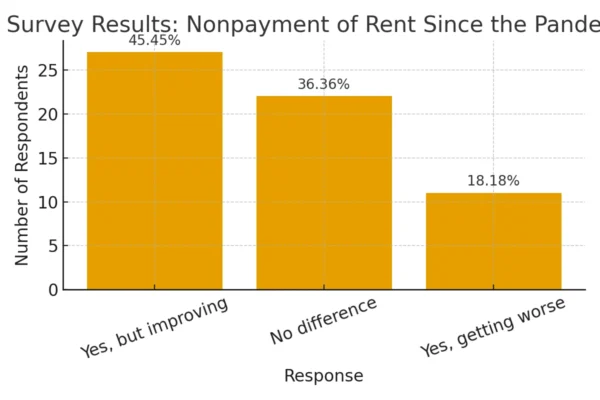How to Write a Notice to Vacate
 As a rental property owner, it’s important to understand a notice to vacate and the local or state laws that apply to this type of real estate form. Although a landlord or property manager wants to fill vacancies, renter turnover is a part of the job — and a notice to vacate letter is one way this process can happen.
As a rental property owner, it’s important to understand a notice to vacate and the local or state laws that apply to this type of real estate form. Although a landlord or property manager wants to fill vacancies, renter turnover is a part of the job — and a notice to vacate letter is one way this process can happen.
A tenant may choose to move for a variety of reasons (e.g., purchasing a home, moving out of the area, growing their family, etc.), in which case they could be in the position to submit a notice to vacate to their landlord.
On the other hand, a landlord may want a new tenant to fill their rental property. For this reason, the landlord can send a notice to vacate, or no-cause notice, to end the tenancy and rental agreement.
Read on as we break down exactly what you should know and what must be included in your notice to vacate:
What is a notice to vacate?
A notice to vacate, also known as a no-cause notice to terminate, is a written legal document from a landlord or tenant to the other party that states their intention to end the lease agreement at a specific termination date. This move-out date may be the lease agreement termination date or another chosen date.
Typically, notices to vacate are required to be given to the other party at least 30 to 90 days before the lease termination date, though that depends on local and state laws. If a landlord or tenant decides to give the notice to vacate, they must ensure it provides proper notice according to the lease agreement and the area’s property law.
The legal idea behind the notice to vacate is that it gives the other party time to plan the end of the tenancy. So if it’s from the tenant, it gives the landlord time to begin their tenant search and tenant screening process. If the notice is from the landlord, it provides the tenant with adequate notice to plan to find a new property, move out and vacate the premises.
Even if the lease agreement has an agreed-upon end date, a tenant must still send a notice to vacate letter to their landlord. This gives the landlord or property manager important information, such as where to send the security deposit after the property’s final inspection — as long as there’s no damage outside of normal wear and tear.
What is the difference between a notice to vacate and an eviction notice?
A notice to vacate should not be confused with an eviction notice. Although a notice to vacate letter may precede an eviction notice, one doesn’t automatically mean the other is on the way.
A notice to vacate establishes an official move-out date that may even match the termination date of the signed lease agreement.
In contrast, an eviction notice is given by a landlord to a tenant once their rental agreement has been terminated, but the tenant still remains on the rental property.
How do you write a notice to vacate?
Writing a notice to vacate will depend on who the sender is and who is receiving this legal document. This information will dictate how the letter is written.
However, there is information that should be included in both scenarios:
- Full name of landlord or property manager
- Contact information (e.g., phone number, email, address, etc.)
- Date of notice
- Number of days notice to vacate
- Tenant name
- Property rental address
- Reasons for notice to vacate (optional)
- Security deposit amount
- Tenant forwarding address (for the security deposit)
- Tenant signature and date
- Landlord or property manager’s signature
Important note: A landlord shouldn’t sign the legal document until after it has been signed by the tenant(s).
Notice to vacate best practices:
- Double-check the lease agreement to guarantee that the notice to vacate doesn’t break any terms. Any broken lease terms may be liable to legal action from the other party.
- Ensure the notice to vacate is sent with proper notice according to local and state law. There can be monetary penalties and fees if the letter is not sent with proper notice.
- Be respectful. A notice to vacate letter can be hard to write, but it shouldn’t be aggressive or emotional. Stick to the facts and only include pertinent information.
- Type the notice to vacate, so the letter is professional and, most importantly, legible for both parties.
- Photocopy the notice to vacate letter and keep it in a secure, organized location for accurate record-keeping. This will come in handy if legal proceedings are pursued in the case of an eviction.
- Include the date the notice is written and/or received on the letter. This serves to provide an establishing start time for this legal document, which will prove if it was sent with proper notice.
- Verify all personal information is correct and accurate. Any typos or incorrect information can affect the notice to vacate letter’s compliance with state law.
- Be responsive and keep track of all communications if the other party has questions or concerns. This is also a great practice for all day-to-day communication with tenants as a landlord.
Notice to vacate example template for landlords
For the body of the notice to vacate, it’s best to keep things concise. Don’t include unnecessary information or details that can detract from the overall message of the notice to vacate.
Get access to a notice to vacate letter (also known as a notice to quit) template here.
Reasons to use a notice to vacate
There are a broad range of reasons that a landlord or property manager may choose to write and send a notice to vacate letter. For many, it occurs because the tenant has broken or failed to comply with the signed rental agreement terms over the course of their tenancy.
Other common reasons to use a notice to vacate include:
- Failure to pay rent
- Consistently late rental payments
- Unauthorized guests living on the rental property
- Prohibited pets
- Noise disturbance to neighbors
- Other lease violations
How do you send a notice to vacate?
A landlord can send a notice to vacate letter by mail, which can be certified and tracked to ensure it’s delivered. They can also choose to place the letter in the tenant’s mailbox, under their door or taped to their front door. In some cases, email can also be an option.
Meanwhile, a tenant can also send a notice to vacate via mail or email to contact the landlord or property manager. If there’s a specific leasing office, the letter can be placed in the office mailbox.
What happens after you send a notice to vacate?
A notice to vacate is not the same as an eviction notice. Due to this, the tenant has a set timeline that they may remain on the property (according to the letter) and prepare to move out.
If the tenant then begins to neglect or fail monthly rent payments, the landlord can then send a late rent notice for record-keeping in the case of any future legal repercussions.
If the tenant or tenants don’t move out at the agreed-upon date, the landlord or property manager may choose to start the eviction process by sending an eviction notice. Avoid putting off any legal action if a prior tenant remains on the property past their lease termination date. Squatters’ rights may come into effect if the lawful property owner doesn’t pursue legal action against a squatter.
Can a notice to vacate be rescinded?
A landlord may choose to rescind a notice to vacate if they’ve been unable to find a new tenant and if the original tenant prefers to remain on the rental property. In this scenario, the landlord can discuss with the current tenant whether they would be open to a lease renewal or brand new lease agreement. This may alter the landlord-tenant relationship, so it’s up to each landlord or property manager’s discretion to make this decision. Tenant turnover can be stressful and costly, which may impact the landlord’s end decision.
If the landlord has already found and signed with a prospective tenant, the notice to vacate letter cannot be rescinded for the current tenant.
If the notice to vacate was submitted due to broken or neglected lease agreement terms, it may not be in the landlord’s best interest to rescind the notice to vacate.
AAOA resources and forms for landlords
The best line of defense for landlords and property managers is their tenant screening process. From the tenant background check to important tenant screening questions to landlord-tenant laws for every U.S. state, AAOA has the resources and landlord forms to streamline your business and find the right tenant fit for your rental property.
Eviction is a tedious and often costly process, but identifying quality tenants can help reduce landlord-tenant legal disputes. By becoming an AAOA member, you can vet potential tenants to make an informed rental decision — and potentially avoid chasing tenants down for back rent or pursuing eviction proceedings.
The information provided herein is for advisory purposes only and AAOA takes no responsibility for its accuracy. AAOA recommends you consult with an attorney familiar with current federal, state and local laws.













 Accessibility
Accessibility